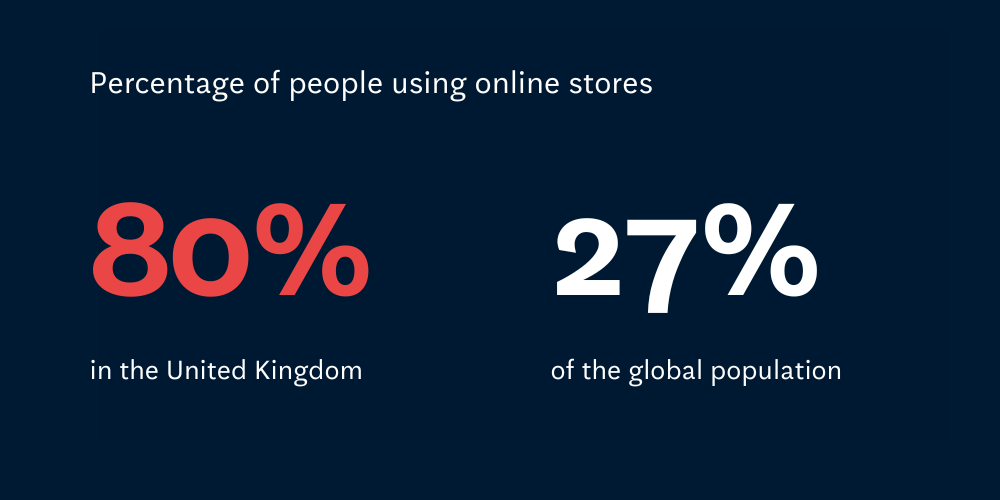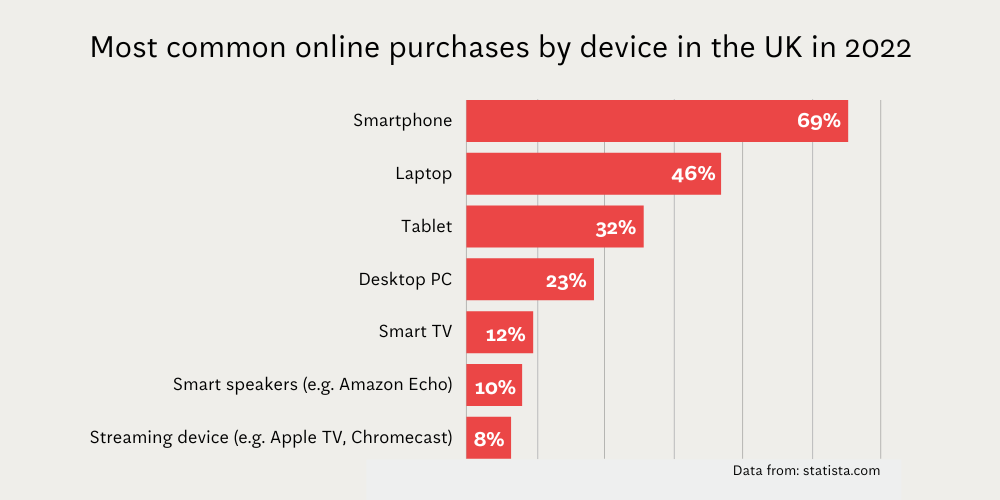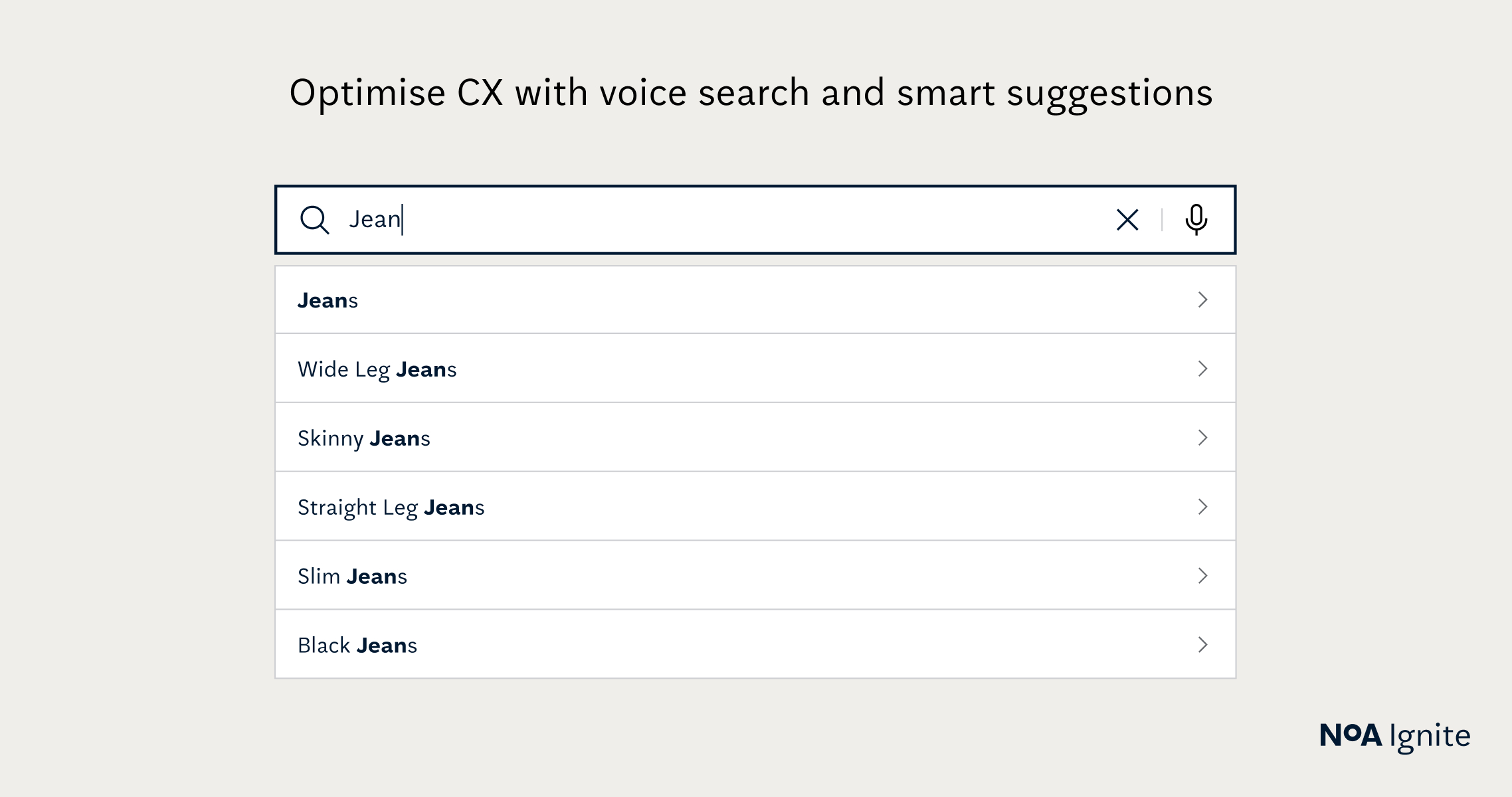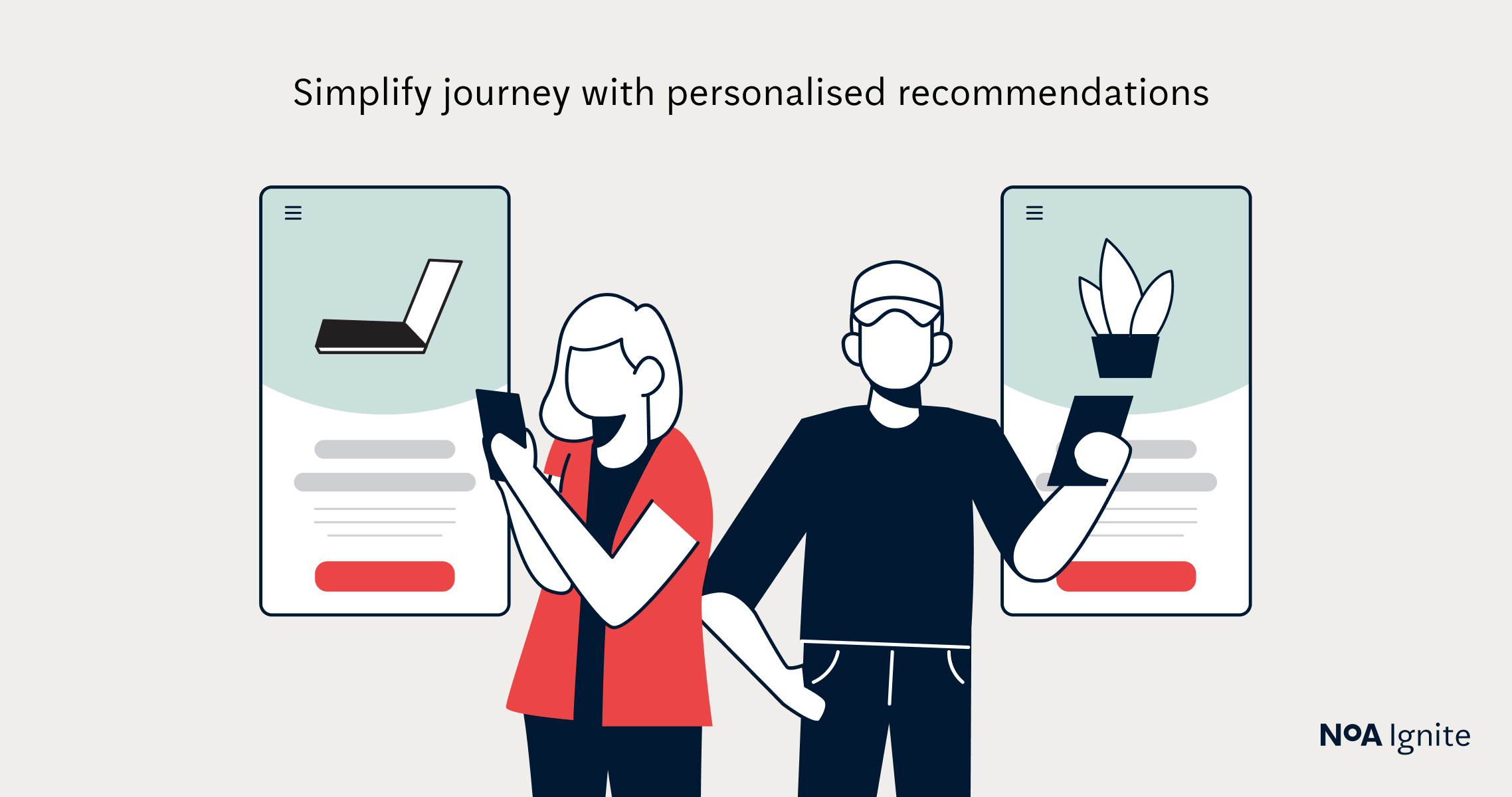E-commerce website accessibility is one of the prerequisites for a successful e-commerce store. Read on to see why it’s so important and how to make your online business accessible.
Financial success in the e-commerce industry is highly dependent on customer satisfaction. Consumers who are happy with service tend to return and spend even more.
Since websites have become a popular means to shop online, the quality of user experience they provide serves as a business card for companies. Taking care of disabled people by offering them the comfort of using a fully accessible platform can make you stand out from the competition. At the same time, a non-compliant website may cause you to lose many potential customers.
This question is especially important in post-pandemic times. With hundreds of new stores out there, every improvement is worth its weight in gold. To learn more, please read our blog: Thriving in turbulent times: building a healthy e-commerce growth.
E-commerce plays with fire: Beat accessibility challenges to skyrocket your sales
The e-commerce industry is one of the biggest gamblers when it comes to the role of accessibility. Revenue in this industry heavily depends on attracting user's attention and encouraging them to take action.
Shopping goes viral
Online shopping has become increasingly popular recently, and it would be hard to imagine life without it. Statistics show that 27% of the global population uses online stores. In developed countries, these rates can be much higher, reaching up to 80% in the UK [1]. This demonstrates that a significant portion of user-seller interactions occur through websites.

Mobility changes the game
Moreover, mobile devices are increasingly being used to conduct online activities. In 2022, mobile trading reached 56% [2]. Mobile commerce means immediate access at any moment and from any location.
49% of consumers use smartphones to compare prices, 30% to find more information about products, and 25% to read reviews [3].
Therefore, it is highly likely that a potential customer's first contact with an e-commerce store will be via their mobile device. Optimising sites for mobile use should be prioritised and used as a competitive advantage. A survey found that 51% of smartphone users changed their minds and purchased from another company due to the quality of the information provided by the website [4].

Incompliance makes you lose
It is undeniable that the profits of e-shops are strongly dependent on the quality of the user experience they provide. According to the UK Parliament, up to 22% of people in the UK live with some kind of disability [5], wchich means 1 in 4 potential customers have a disability. Losing them can notably decrease the conversion rate, resulting in less income.
Despite this, up to 94% of e-commerce sites have accessibility compliance issues, particularly with images (82%), links (73%), keyboard navigation (63%), and form field markup (58%) [6]. All of these elements are extremely important during the customer journey of online shopper.
Accessibility is an ageless investment for e-commerce business
Modern life has created a sense of urgency in us, making us want fast results. We tend to take shortcuts and not consider the consequences. Business owners wants to see profits as soon as possible, so they may open their online stores quickly, even if they lack essential improvements.
However, spending more time on creating a fully accessible and user-friendly e-shop will be beneficial in the long run, especially in a rapidly ageing society. In such a case, this investment would be a long-term one.
E-commerce accessibility: how to create an inclusive shopping experience
Let your e-reputation precede you
Customers tend to buy brands rather than products. Developing brand loyalty can be considered a marketing success. This happens when customers make repeat purchases from the same brand based on positive feelings about the quality provided and the trustworthiness of the company.

Since attracting new clients is five times more expensive than keeping existing ones [7], loyal consumers have a huge impact on reducing the customer acquisition cost. They choose to stay loyal regardless of the pricing and competitive offers.
According to the State of Brand Loyalty 2022 [8]:
- 39.2% would pay more for products of their favourite brand,
- 59% would wait for the product to be back in stock instead of buying it from another company,
- 54.5% would recommend the brand to others,
- 58.5% are willing to sign up for emails, and 65.3% for the brand’s loyalty program.
- Over 83% admit that belonging to a rewards plan affects their tendency to keep purchasing from a particular firm.
How to play your customer experience cards right
Getting shoppers to love your business requires a customer-centric strategy. This means focusing on providing a great customer experience.
Studies show that 85% of people are willing to have further interactions with the company after a positive experience [9]. The same research proves that the best opportunity for creating an emotional bond with the client is when they face difficulties and stressful situations. The quality of help they receive during those moments strongly affects their decisions about future purchases.
Disabled people, in particular, often face challenges during online activities. Therefore, taking care of their needs gives you even more chances to establish and maintain strong relationships.
Customer service in e-commerce: Becomoming a tower of strength
Excellent customer service is a game changer. Bain & Company claims that increasing customer retention rates by 5% generates 25% higher profits [10]. Moreover, businesses focused on the best possible customer service boost revenues between 4%-8% above their market [11].
This is why making your e-commerce store fully accessible is so important. Providing equal treatment and support to all potential clients reinforces your brand image as a trustworthy company.
Remember to offer multiple communication channels (phone, email, live chat, video call, online form). It makes disabled people feel safer, as they are not limited to only one option to reach out for help. However, according to the study [12], only 7% of respondents will be willing to ask for help. Most of them will abandon the website when comingencountering a barrier. Having that in mind, customer service should be implemented in the website itself.
Invest in accessible web design
What can be done exactly to improve your e-shop’s accessibility? Covering the essential basics is the first step. We discussed this question thoroughly on our blog: Web accessibility: grow your business by making your customers’ lives easier.
“Put your accessibility where your mouth is!"
The website should have a user-friendly design with toned but distinguishable colours, a proper amount of spacing, an easy-to-read font style and size, alternative text for images, transcripts or subtitles for videos, and a reduced amount of animation.
Every element that can be pressed, such as a button or link, should be big enough to enable seamless interaction. Also, ensuring that the client can go through the whole shopping process using only the keyboard navigation is a must.
Don’t let the search cards be stacked against you
However, if you wish to excel, you need to go beyond that. Delivering search expectations is highly beneficial. Poor search performance causes 80% of consumers to leave the site.
According to the study, the most frustrating issues are showing irrelevant results (41%), displaying products that are out of stock (32%), the lack of appropriate filters (30%), and the search being unable to interpret the queries (26%) [13].
Sweeten the search pot
On the other hand, an optimised search engine may bring you more clients. Search users convert 1.8 times more often than regular users [14]. According to Google, 90% of respondents consider a good search to be important [15]. Moreover, 43% of people are willing to pay more for a product which was found easily [16].
You can enrich your solution with such features as voice search and autocomplete. They will prevent some spelling mistakes and save a lot of time. Additionally, they are extremely useful for people with vision and motor impairments.
We talked a lot about the search bar and the search results page during our webinar on the e-commerce health check. We encourage you to watch it!
To facilitate this process even more, include some content suggestions, such as images or ratings in the search response. Presenting results in a such way would be more appealing to your customers. It will help them recognize the desired product but also bring their attention to other offerings.
Moreover, enabling making a purchase straight from the search bar by clicking an “Add to cart” button attached to displayed results, will be of great significance to returning customers buying the same products regularly.
Make it personal
The value of an improved search is even greater. It enables you to collect data about your clients’ preferences which may then be used for personalisation. While 70% of shoppers admit that personalised search results encourage them to make a purchase [17], companies applying personalised tactics make 40% more revenue [18].
Integrating a Customer Data Platform (CDP) with your e-store might be a way to meet your customers’ expectations. According to the survey, 71% of consumers wish to have a personalised experience, and 76% of them get disappointed when having irrelevant recommendations [19].
Personalisation may also facilitate the shopping process for disabled people by simplifying their customer journey and limiting the number of steps required.
Clear steps lead to higher conversion rates
Dealing with a multi-step operation such as making a purchase can be frustrating, especially for people with disabilities. According to Web Content Accessibility Guidelines (WCAG), implementing a cognitive accessibility design pattern into the checkout process [20] might help you ensure that every step is clear for the users.
This includes showing breadcrumbs with information about completed steps, the current step, those which are still pending, and any important choices to make. Thanks to that, consumers can easily recognise the current progress even after they get distracted and complete the task successfully.
You should also pay attention to proper form instructions. Remember about meaningful labels and descriptions, as well as styling that meets the minimum colour contrast ratio. Enable screen readers to present the content more clearly by using semantic HTML elements such as "form", "input", or "label". These improvements give a sense of security to disabled people and encourage them to come back to your website.
Let money become accessible
In e-commerce, revenue is generated when consumers take action, and it is even better when those actions become regular. To attract and retain loyal customers who are satisfied with your services, you need to provide them with a convenient way to interact with your online store.
Optimising your website according to digital accessibility standards is a crucial element for successful business development. By including customers with disabilities, you can mitigate the risk of negative reviews spreading online. Instead, show prospective clients that you are considerate of their needs. This will increase their confidence in your brand and help drive sales growth.
Bibliography / Footnotes:
[1] https://www.statista.com/topics/7887/online-shopping-behavior-in-the-uk/#topicOverview
[2] https://www.outerboxdesign.com/web-design-articles/mobile-ecommerce-statistics
[3] https://www.tidio.com/blog/mobile-commerce-statistics/
[5] https://commonslibrary.parliament.uk/research-briefings/cbp-9602/
[6] https://baymard.com/blog/accessibility-benchmark-launch
[7] https://www.invespcro.com/blog/customer-acquisition-retention/
[8] https://www.yotpo.com/the-state-of-brand-loyalty-2022/loyal-shoppers-go-the-extra-mile/
[10] https://media.bain.com/Images/BB_Prescription_cutting_costs.pdf
[11] https://www.bain.com/insights/are-you-experienced-infographic/
[14] https://econsultancy.com/is-site-search-less-important-for-niche-retailers/
[16] https://www.coveo.com/en/relevance
[20] (https://www.w3.org/WAI/WCAG2/supplemental/patterns/o1p04-clear-steps/)
Author

Sabina Strömmer-Marchewka
Front-end Developer
Sabina is a Front-end Developer with a philological background. The areas of her professional interest include mainly frontend technologies such as Vue.js and React.js. She also focuses on user experience and accessibility.
Related articles
![Medieval people at the market – a painting in Pieter Breugel the Elder style generated by AI.]()
December 15, 2023 / 3 min read
Stop 'crying wolf': Insights from Black Friday 2023 in the UK
Black Friday and Cyber Monday, pivotal moments in the UK's retail calendar, mark the start of the festive shopping season. Every year, IMRG – the UK Ecommerce Association - collects...
![A stage with a large screen from the Opticon conference.]()
December 11, 2023 / 4 min read
Everything you might have missed from Opticon 2023
We recently participated in Opticon in the UK and Sweden, and we’re eager to share our insights on the latest developments to Optimizely. This year has brought some exciting changes,...









